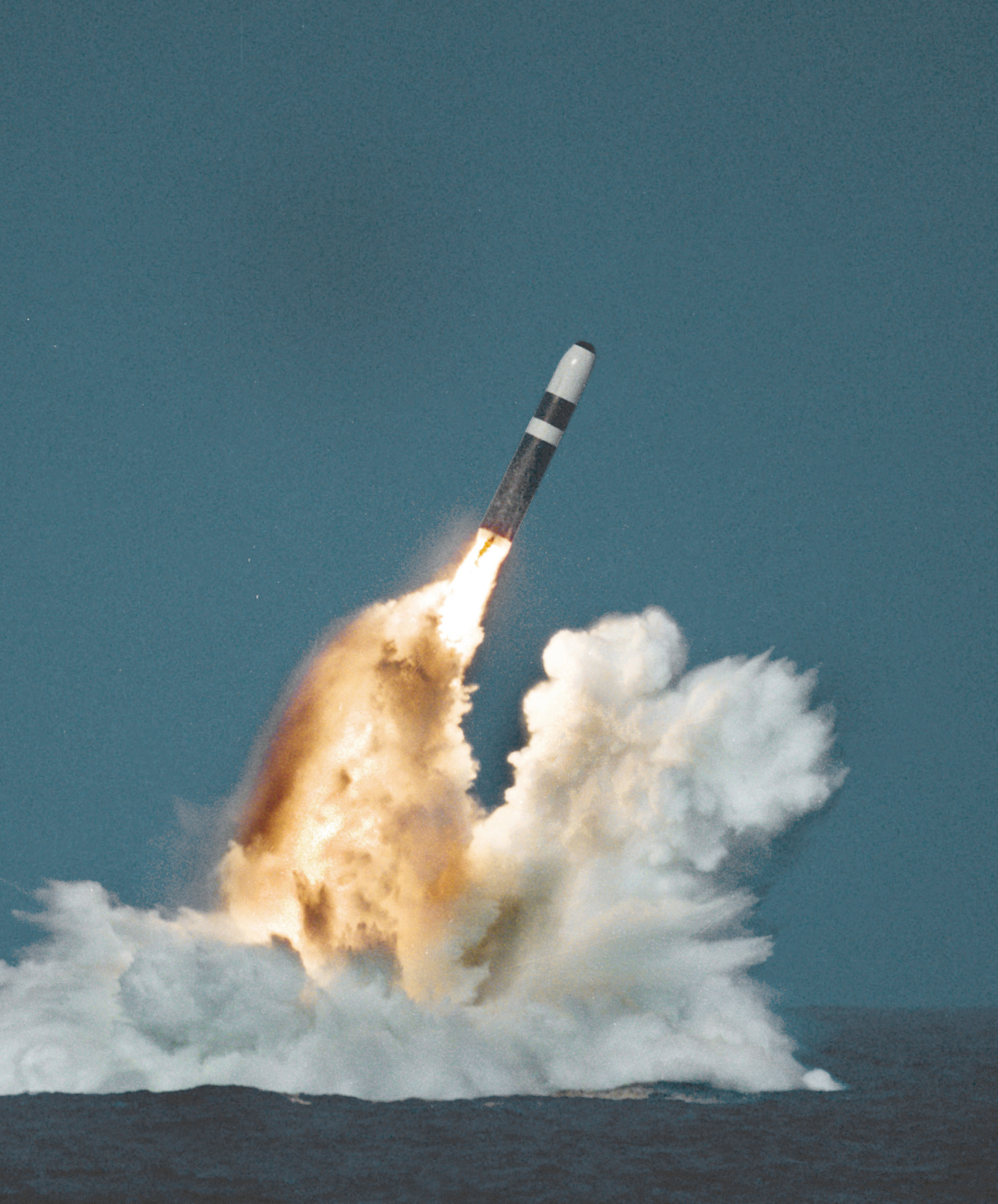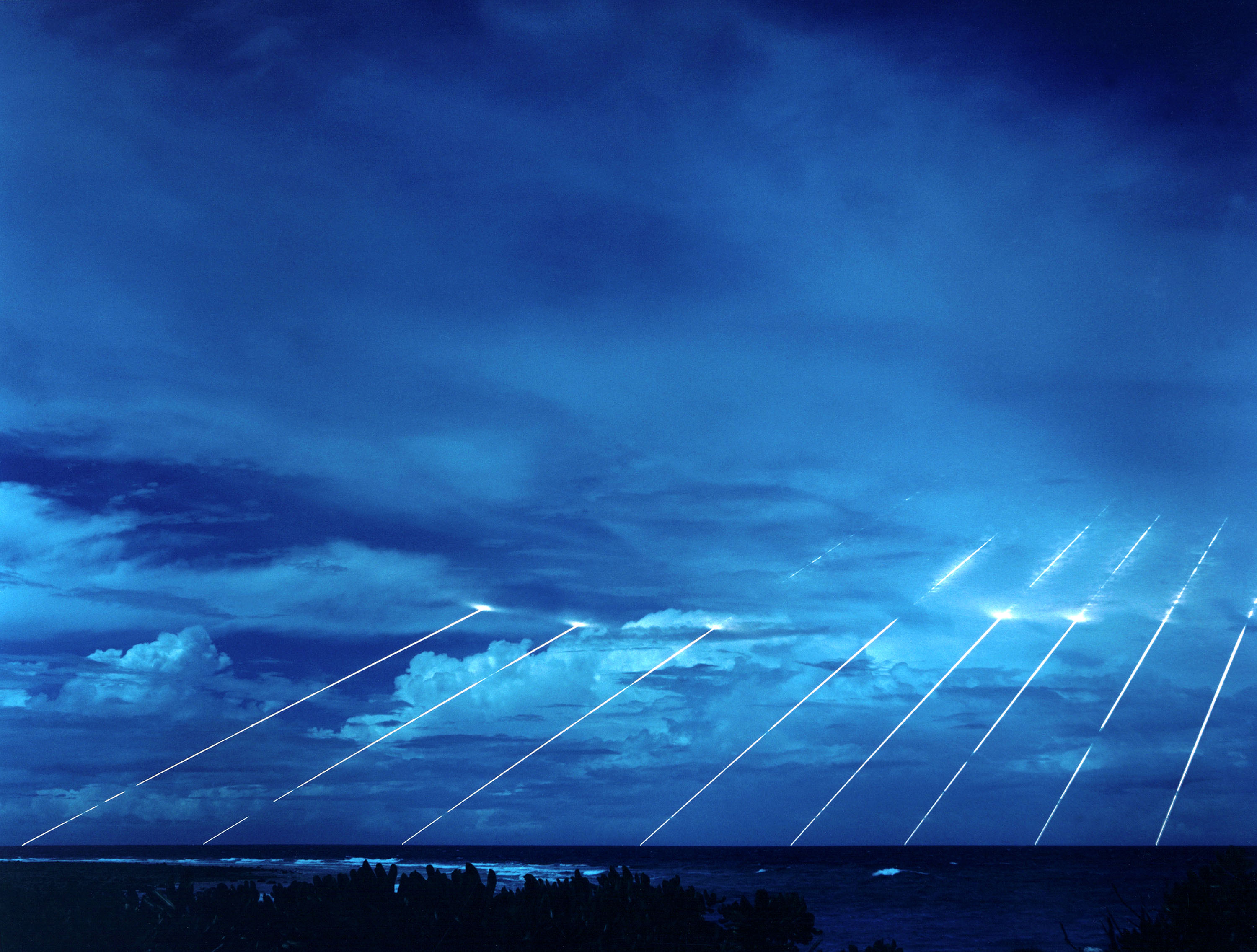You see, when I am surfing the web, it is
inevitable that my ADD will kick in, and I will mindlessly click through
Wikipedia for hours. The information I found regarding some of
mankind’s most awesome and destructive weapons was truly terrifying. It
is in our best interest as a species that most of these weapons are
never used.
Yet while using them may be a terrible
idea, sharing their destructive capabilities with the world isn’t. The
more you know about how terrible modern warfare is, the better.
5. Nimitz Class Aircraft Carrier
I begin with a weapon that has already seen active duty for over 30 years. The backbone of the US Navy, the Nimitz class is both massive in size and destructive power. At over 1100 feet long and 100,000 tons fully loaded, the Nimitz class is capable of carrying 85 aircraft. The ships feature twin nuclear reactors which don’t need to be refueled for 23 years, meaning that the Nimitz class ships feature a virtually unlimited range. The massive destructive power of 85 jet fighter aircraft means that a single Nimitz class carrier is able to wage a war against a whole country and win. A lone Nimitz class just showing up in a region is often enough to deter aggressors and influence global politics. It’s that scary.
4. The Predator and Predator B (aka The Reaper)
Our next terrifying weapon isn’t terrifying
because of its destructive power, size, or speed. It is terrifying
because of what it means for the future of mankind. The Predator B or
Reaper (pictured above) is the successor to the MQ-1 Predator, which has
seen action in Iraq, Afghanistan, Bonsia, Serbia, Pakistan and Yemen.
The Predator is so significant and terrifying because it is the first
unmanned aircraft ever to engage in armed combat (a Predator was shot
down by an Iraqi Mig-25 after firing a missile at it in 2002). If you
don’t get how significant that is, think about this.
Robot wars.
Even though the Predator is remote controlled, it is the first step that I believe will eventually lead to robot warfare.
3. The Airborne Laser
Star Wars fans might like this one. You
see, The Galactic Empire had the Death Star, and now the American Empire
has the YAL-1A Airborne Laser.
Where the Death Star was a moon sized space
station with a planet destroying super laser, the YAL-1A is just a 747
with a really big laser mounted on the front. Designed to shoot down
enemy ICBMs from hundreds of miles away, the YAL-1A is revolutionary in
its ability to destroy a high speed moving target at a massive distance
instantly.
Picture this scenario. The YAL-1A is
flying hundreds of miles away from the battlefield over friendly
airspace. Troops on the ground call in an airstrike and radio GPS
coordinates to the YAL-1A, which then immediately fires its laser
delivering extremely precise killing power on target at the speed of
light. No waiting, no warning.
2. The Trident SLBM
So what could possibly be more terrifying
than an unstoppable swarm of fighter jets, a killer robot plane, or a
giant laser? If your guess was “nuclear weapons” you would be correct.
The thing is though, nuclear weapons have come a long way since the
bombings of Hiroshima and Nagasaki in 1945. This little thing called
the Cold War
meant the United States and Russia spent unfathomable ammounts of money
to develop nuclear delivery systems and increase weapon yield.
The result of all of this research leaves
us with the Trident II D5, which is a submarine launched ballistic
missile. Deployed by both the United States and United Kingdom, the
Trident II is one of the most powerful weapons system in use today.
(America’s most powerful land based missile, the Peacekeeper was taken offline in 2005.)
The nuclear powered subs that carry the
Trident are pretty terrifying as well. Like the Nimitz class carrier,
the American Ohio class and British Vanguard class subs have an
unlimited range. They can stay submerged and loiter next to a target
almost indefinitely for they are limited only by food supplies.
When the sneaky subs actually fire a
Trident II, things start to get really scary. Propelled out of the
submerged submarine and into the air by pressurized gasses, the Trident
ignites only after it leaves the water. The Trident II can then target
anything within its 9000 mile range.
Each Trident II has eight independantly
targeted reentry vehicles (called MIRVS). Each RV contains a 475
kiloton thermonuclear warhead (the weapons detonated over Hiroshima and
Nagasaki were 15 and 21 kilotons respectively). This means that a
single Trident is capable of destroying eight targets or completely
incinerating one. As the eight reentry vehicles streak back through the
atmosphere towards their targets at hypersonic speeds, they create
streaks of fire through the sky called the “Fingers of God.” Each
Trident II is capable of delivering a total of 3.8 Megatons of
explosives. Although the image below was taken during a test of the
Peacekeeper missile, the effect is the same. At the bottom each each
“Finger of God,” try to imagine a thermonuclear explosion.
1. R-36 ICBM
Topping off my list is the Russian R-36,
which like the Trident is a nuclear armed ballistic missile with
intercontinental range. Unlike the Trident, the R-36 is a landbased
missile, which takes away some of the terrifying factor. You ask then,
what makes this the most terrifying weapon ever created?
It’s not very accurate.
Now I know you are thinking, “Why is a weapon that misses its target scary?”
During the Cold War, both the United States
and the Soviet Union were designing these things for the sole purpose
of knocking out the enemies missiles so they couldn’t retaliate. The US
had the whole accuracy thing down so we didn’t have to worry about
missing the Russian Silos. The Russians on the other hand were having a
problem hitting their targets, so their solution was to increase the
ammount of nuclear ordinance on each missile. Even if the missile was
off by a few miles, the explosion would still be big enough to destroy
the American silos.
Now, to create a bigger nuclear explosion,
you need a bigger and heavier nuclear bomb. To transport a bigger bomb,
you need a bigger missile, and the R-36 is gigantic even when compared
to America’s largest missile, the Peacekeeper






No comments:
Post a Comment